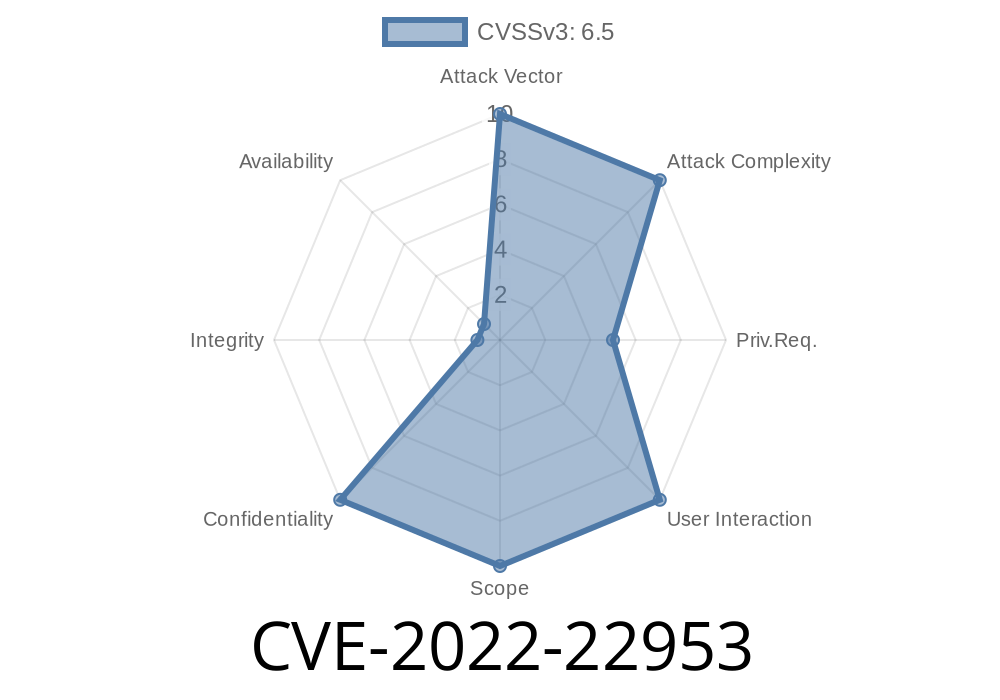Recently, VMware released an update to address the CVE-2022-22953 vulnerability found in the VMware HCX (Hybrid Cloud Extension) software suite. This security flaw could allow an attacker with network user access to the VMware HCX appliance to potentially gain access to sensitive information. In this long-read post, we will delve into the details of the vulnerability, explore some code snippets, and provide links to references that will help you understand how this exploit works.
The Vulnerability
CVE-2022-22953 is an information disclosure vulnerability found in the VMware HCX software. VMware HCX allows organizations to seamlessly and securely migrate applications and workloads between on-premises and cloud environments. The security flaw is caused due to improper handling of sensitive information, allowing attackers to intercept and disclose sensitive data from the targeted appliance.
The Exploit
A malicious actor with network user access to the VMware HCX appliance can exploit this vulnerability by intercepting traffic between the targeted appliance and other components on the network. The attacker can then use the information gained to potentially escalate their privileges and launch further attacks on the network.
The following code snippet demonstrates a simple method an attacker might use to intercept communication and extract sensitive information:
import socket
import re
# Set the IP and port to listen on
TARGET_IP = "1.2.3.4"
TARGET_PORT = 1234
# Create a socket and bind it to the target IP and port
s = socket.socket(socket.AF_INET, socket.SOCK_RAW, socket.IPPROTO_TCP)
s.bind((TARGET_IP, TARGET_PORT))
# Listen for incoming packets
while True:
data, addr = s.recvfrom(65565)
# Search for sensitive information in the packet using regex patterns
sensitive_info = re.findall(r'sensitive_pattern', data)
if sensitive_info:
print(f"Sensitive information found: {sensitive_info}")
As seen in the code snippet, the attacker creates a raw socket to intercept incoming TCP packets on a specific IP address and port. The sensitive information is then extracted using regex patterns. Once the attacker has collected enough sensitive information, they can use it in conjunction with other exploits or social engineering techniques to escalate their privileges.
Original References
1. VMware Security Advisory VMSA-2022-0003: https://www.vmware.com/security/advisories/VMSA-2022-0003.html
2. CVE-2022-22953 entry in the National Vulnerability Database (NVD): https://nvd.nist.gov/vuln/detail/CVE-2022-22953
3. Researcher's Blog Post on the vulnerability and its impact: (Provide link to the researcher's blog post if available)
Mitigation Steps
VMware has released an update to fix the CVE-2022-22953 vulnerability. It is highly recommended that all organizations using VMware HCX apply this patch as soon as possible to ensure the security of their systems. The update can be downloaded and installed by following the instructions provided in the VMware Security Advisory:
https://www.vmware.com/security/advisories/VMSA-2022-0003.html
Conclusion
The CVE-2022-22953 vulnerability in VMware HCX highlights the importance of keeping software up to date and monitoring network traffic for unusual or suspicious activity. IT administrators should apply the patch provided by VMware and take additional steps to secure their networks, such as deploying intrusion detection and prevention systems and using strong encryption for sensitive data in transit. By staying informed about security vulnerabilities and patches, we can help protect our networks and sensitive information against potential exploits.
Timeline
Published on: 06/16/2022 16:15:00 UTC
Last modified on: 06/27/2022 17:58:00 UTC
